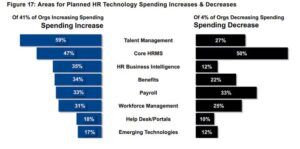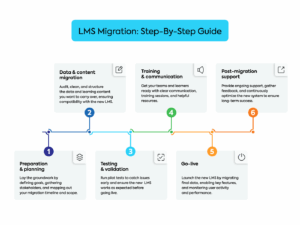
A Guide To Help You Measure The True Impact Of eLearning
Relying solely on quantitative data to gauge the effectiveness of eLearning is like judging a book by its cover. While numbers offer a quick snapshot, they often fail to capture the nuanced and invaluable insights that truly reflect a learner’s experience and understanding. A low score could stem from something as trivial as disliking an instructor’s attire or accidentally taking an irrelevant course. To truly measure the impact of eLearning, we need to dig deeper.
Moving beyond surface-level metrics requires a thoughtful approach to data collection. Instead of just tracking completion rates or quiz scores, focus on methods that illuminate comprehension, engagement, and the practical application of knowledge.
How To Measure The Real Impact Of eLearning In Your Organization
Asking Open-Ended Questions
One of the most effective ways to gauge a learner’s understanding is by asking questions that require more than a “yes” or “no” answer. Open-ended questions allow you to uncover the depth of their comprehension, whether it’s basic recall, intermediate application, or expert-level insight.
Consider this scenario: your leadership team has just completed an online course on coaching basics, designed to equip them with strategic processes for meaningful career development conversations. Instead of a multiple-choice question, ask: “Which strategy from the coaching basics course did you find to be the most valuable and why?”
Here’s another example of how to apply this: After a sales training on negotiation, instead of “Did you understand the Win-Win concept?”, ask, “Describe a recent negotiation where you could have applied the Win-Win strategy from the course. What might have been different?”
This helps you see if they can connect the dots to their actual work. This type of question prompts leaders to reflect on the content, identify key takeaways, and articulate their reasoning, offering a window into their thought process and the aspects of the course they genuinely resonated with.
Encouraging Reflection For Deeper Engagement
Measuring engagement goes beyond tracking time spent on a module. When learners can articulate what they’ve learned and consider its real-world application, it indicates a higher level of engagement and internalization of the material.
Let’s revisit your leaders, who are excited about implementing the coaching basics strategies. To determine if they truly grasp the concepts and how they’ll use them, ask them to reflect on practical application: “How would you apply the identified coaching strategies to your specific role and team dynamics?”
Here’s another example of how to apply this: Following an eLearning module on conflict resolution, ask employees to complete a short prompt: “Think about a past workplace conflict. How would you now approach that situation differently, using the techniques learned in this module?” This pushes them to internalize and plan for application. This question also encourages them to connect the theoretical knowledge to their daily responsibilities, revealing whether they’ve just memorized information or genuinely integrated it into their professional routine.
Promoting Peer Interaction And Collaborative Learning
Learning isn’t always a solitary journey. Encouraging structured peer interaction and discussion within your eLearning environment can uncover deeper insights into comprehension and application, while also boosting engagement through social learning.
Here’s an example of how to apply this: After a module on conflict resolution, instead of just individual reflection, prompt learners to participate in a brief online discussion forum: “Share a hypothetical workplace conflict and ask your peers how they might apply the course’s strategies to resolve it. Respond to at least two of your colleagues’ scenarios.” This pushes them to apply concepts to diverse situations and learn from each other’s perspectives.
Leveraging Quizzes To Check For Understanding
While we’ve emphasized qualitative data, quizzes still play a crucial role. They are excellent for checking understanding, reinforcing lesson objectives, and measuring knowledge retention. When designed thoughtfully, quizzes can go beyond memorization and assess a learner’s ability to apply concepts.
You can customize quizzes to align with your company’s guidelines, incorporating scoring requirements that reflect the importance of the content. However, remember that even with quizzes, it’s essential to consider them as one piece of a larger assessment puzzle.
Here’s an example of how to apply this: For a compliance training on data privacy, instead of just “Which data is considered PII?”, present a scenario: “A customer calls asking for their account details, but they can’t remember their security question answer. Which of the following actions is the most compliant with company policy?” This assesses application, not just recall.
Implementing Formative Assessments Throughout
While quizzes are vital for checking understanding, consider incorporating formative assessments throughout your eLearning modules, not just at the end. These are low-stakes checks designed to give learners immediate feedback and help them gauge their own progress.
Here’s an example of how to apply this: In a course on cybersecurity, after a module explaining phishing, include a quick “spot the phishing email” drag-and-drop activity. There’s no score recorded, but the learner immediately sees if they correctly identified the red flags, helping them correct misunderstandings in real time. This isn’t about passing or failing; it’s about active learning and self-correction.
The Real Impact Of eLearning
Ultimately, while analytical data provides a valuable baseline, it’s crucial to remember that numbers alone don’t always depict the full picture of a learner’s journey. By incorporating open-ended questions, encouraging reflection, and strategically using quizzes, you can obtain more comprehensive and useful data that truly measures the impact of your eLearning initiatives and helps learners absorb and apply what they’ve learned in the real world. What other creative ways have you found to measure the effectiveness of eLearning beyond traditional metrics?



